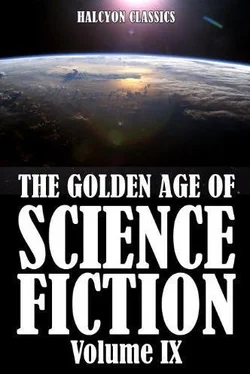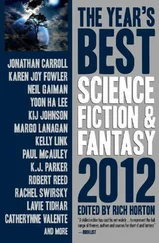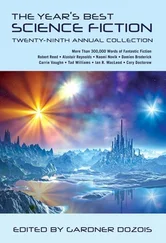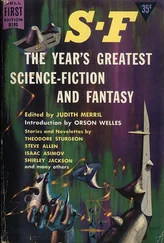John laughed, and congratulated him heartily on his brilliant outlook for the future, remarking that he did not appear to regret coming to Mars.
“Indeed, I don’t,” M’Allister replied; “I’m thinking it will prove the very best thing I’ve done in my life.”
“Well, sir,” said Merna, “I told you those machines would suit you as an engineer; are you satisfied now you have seen them?”
“More than satisfied,” answered M’Allister; “they are the most extraordinary and most ingenious machines I ever saw, and I wouldn’t have missed them for anything!”
At the sides of each high-level canal we saw a series of locks and weirs so constructed that vessels can pass on, in successive stages, from the high-level to the low-level canals, and vice versâ.
These locks and weirs are all within the area enclosed by the embankments forming the carets, which accounts for the long and extensive space the latter cover, as the locks are necessarily a considerable distance apart from each other to allow for a length of canal to be traversed before the next lock is reached. They are, however, not in themselves sufficiently conspicuous to be separately discerned from the earth by our telescopic observers.
Machinery for forcing the water along the canals is also provided at most of the junctions everywhere on the planet. In this connection it must be remembered that the water is carried by the canals from one hemisphere to the other, and, after passing the equator, must therefore move in a direction contrary to that of ordinary gravitation.
Thus at one season of the year the water passes from the north polar regions down into the southern hemisphere, and at the opposite period of the year it is carried in the same way from the south polar regions right into the northern hemisphere.
Gravitation being almost non-effective as regards the flow of water on Mars, the movement would be extremely slow everywhere were it not for the machinery, which adds to the speed of the flow. The average rate of the movement of the water in the canals is about fifty-one miles a day, and it takes about fifty-two days for the water to pass from about latitude 72° down to the equator, a distance of 2650 miles.
This rate of flow, as indicated by the darkening arising from the growth of vegetation which follows the flow of the water down the canals, has been observed and noted many times at Flagstaff Observatory.
It was now perfectly clear to us why the “carets” are only seen in the particular places in which they have been observed by Professor Lowell and his colleagues. They are, in fact, only needed in connection with water-lifting apparatus, and locks and weirs, at the places where high-level canals connect with those at a lower level!
We were all very pleased at finding the solution of a problem which had been much discussed between us without arriving at any satisfactory conclusion.
John then asked Tellurio if he would be good enough to explain to us how it was that our observers on the earth saw some of the Martian canals doubled at some periods of the year and single at other times; and sometimes one of the twin canals was seen alone, and at other times the second one only was visible.
“It is a very simple matter, sir,” replied Tellurio. “You will understand that we do not wish to waste any of our water, and as it is quite unnecessary to use all our canals at the same time, we only use those which are actually required. This arrangement also allows us to have a much greater depth of water in the canals than would be the case if they were all in use at once.
“Many of the canals are only required for irrigating seasonal crops; so as soon as the requisite amount of moisture has been acquired by the soil the water is turned from that canal into another one, passing through an area where a later seasonal crop is to be grown. This arrangement, moreover, applies not only to our double canals, but also to very many of the series which you have regarded as single canals.”
Thus the mysteries connected with Mars were being cleared up one after the other; and having regard to the very simple and natural explanations we received, we could not help laughing as we talked the matter over and recalled the immense amount of discussion and wrangling which had occurred amongst our scientific men in connection with these matters, and especially at the difficulty they seemed to experience in believing that the canals could exist at all. Then there were those charges and theories of overstrained eyes, diplopia, and defective focussing, to say nothing of other suggestions. Well, I will not say any more upon this point.
In continuation of our discussion of the canal question, I asked Tellurio “Whether the canals and irrigation system had been the means of reclaiming any large areas of land which had previously been deserts?”
“Oh yes, sir,” he answered, “that has been the case in many parts of our world; some very large areas indeed which were once deserts have now become very fertile. Quite apart from such reclamations, however, our canals and irrigation systems have also effectually checked the spread of desertism. If it had remained unchecked, probably by this time the entire surface of our planet would have become a desert.”
I then explained that I asked the question because our observers had seen and noted upon their charts several large areas which seemed to have become fertile. Thus, along the eastern side of Thaumasia it had been noted that, during a period of about twenty-three years, the green area had advanced at least 400 miles nearer to the place we called the “Solar Lake.” On measuring this area on the map it appeared to me that at least 200,000 square miles which had previously been desert had become fertile.
Similar extensions of vegetation had also been charted in several other places, for instance, on the east side of the large area known to us as “Syrtis Major.” I had, however, been rather surprised not to have come across any comment by our scientists on the significance of this very large increase of fertile land, as, taken in connection with the great canal system, it seemed to me very significant and full of meaning.
Merna, continuing his remarks, then said that “Lately considerable extensions of their canal system had been carried out. New canals had been dug, others altered or extended, and vast areas had been considerably changed by replanting in some places and fallowing in others. The result of all this work,” he said, “would produce a striking alteration in the configuration of some of the dark areas. Such changes,” he remarked, “were carried out very rapidly, so rapidly indeed that it would probably be almost incredible to terrestrials; but it must be remembered that excavation, loading and removal of soil, as well as most other operations, were accomplished by special machinery. He had no doubt these changes would be noted by our observers, as Mars was so favourably situated in regard to the earth at the present time. Besides this,” he continued, “many of our canals have been dealt with, and some of them will disappear, either temporarily or permanently.”
“Well, Merna,” said John, “if that is the case our observers will soon miss them; and I can imagine some of them gazing on your planet through their telescopes and exclaiming, ‘Lo! here is the symbol of the death of Mars. Where we used to see canals there is now only blank space; the canals are disappearing, and the Martians must be rapidly decreasing in numbers and no longer able to maintain their vast canal system; or perhaps their water supply is diminishing so rapidly that it is becoming insufficient to keep the canals in working order; so ere long all life upon Mars must come to an end!’”
“If that should be so,” said Merna, “they will be altogether wrong in their surmises, for the disappearance of several of our canals will not indicate death but life. Some of those canals will only be temporarily put out of use, but others, having served their purpose, will be discontinued permanently. They are like our flowers that have done blooming, which may be allowed to grow again next season, or the ground may be fallowed and fresh flowers planted elsewhere; so the vanished canals may be succeeded by fresh ones where they are needed; and when your people see these new canals they will know that they indicate the continued existence of vigorous and enterprising life upon Mars.”
Читать дальше












